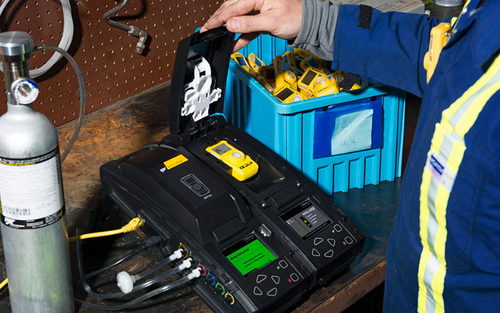OSHA Gas Monitor Calibration Requirements: How Often Do I Need to Calibrate My Gas Detector
According to OSHA, it’s best to calibrate your multi-gas detectors and single gas monitors, before each use, but that isn’t practical for many teams. It is often better to calibrate your equipment based on the manufacturer’s guidelines, but these can be misleading as well.
Calibration will depend on the specific device in question and how often you plan on monitoring your workplace. Use this guide to keep your team safe in the field.
Manual Tests
Calibrate your monitor before each use to make sure your results are accurate. Manual calibration means refiguring just one device at a time by hand, instead of relying on automated systems. This is best if you do not use your gas monitors regularly.
Follow these two steps to make sure your monitor is working properly:
- Bump Test
A gas detector bump test compares the readings on the meter to the contents of a test gas cylinder, commonly referred to as a “calibration gas.” To perform a manual bump test, turn on the monitor in a clean air environment. Apply a test gas cylinder to the sensors for approximately 20 seconds. Make sure the alarm goes off with an audible buzzer or flashing LED lights. If the readings on the meter match the contents of the cylinder, the monitor is calibrated and working properly.
- Full Calibration
If the readings on the meter do not match the contents of the cylinder, a full calibration is required. This is only necessary if the original bump test fails. A full calibration includes reconfiguring the sensors of the alarm so that they match the contents of the test gas cylinder. You will need to zero the meter and change the readings so that they align with the contents of the test gas.
Automated Tests
If you use your gas monitors on a regular basis or you need to calibrate dozens, if not hundreds, of monitors before a shift, it’s best to use an automated calibration system. The system will automatically calibrate your monitors overnight or when they are not in use so that they are ready to go when you come into work the next day.
To perform an automated test, you’ll need to purchase a gas monitor docking station. Insert the monitor into the dock and use the included controls to schedule regular calibration. The system will log the time and results of each calibration for each monitor. You can then review this information on your computer, laptop, or smartphone using the included software system.
It’s best to bump test your gas monitor before each use. If the initial test fails, a full calibration is required. Use automated calibration to simplify this process. Instead of completing these tests by hand at the start of each shift, you can leave your monitor in the docking station for more peace of mind on the job. Use this information to make the most of your gas detection equipment.
And, if you need help, PK Safety provides a gas detector calibration service. Contact us for more information.
Related Searches
Multi-Gas Detector Calibration, Gas Detector Calibration, Bw Honeywell Gas Detector Calibration, How Often Should You Bump Test A Gas Detector, Bump Test Kit For Gas Monitors,
Recent Posts
-
Customizing Gas Detectors: Tailoring Solutions to Fit Your Unique Requirements
In today’s diverse industrial landscape, a one-size-fits-all approach to safety simply doesn’t cu …Jul 3rd 2024 -
10 Ways to Prevent Wildfires
You can prevent wildfires by extinguishing flames before you leave the worksite. Avoid practicing …Jul 1st 2024 -
ANSI/ISEA 138 Safety Gloves: Ensuring Hand Protection
The human hand is an anatomical masterpiece and arguably the greatest tool attached to our bodies …Jun 25th 2024





